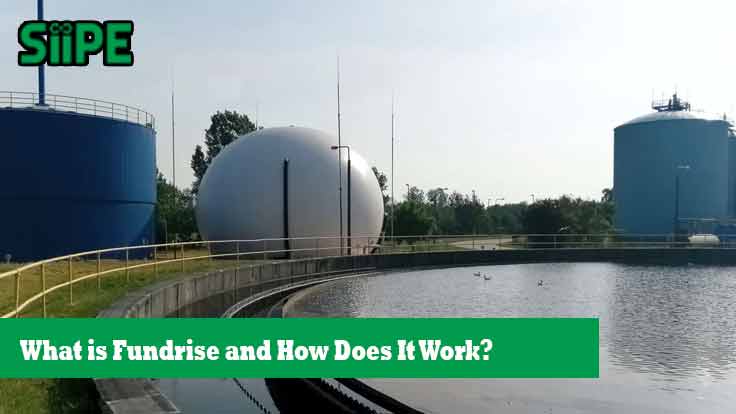Industries across the globe are under increasing pressure to adopt sustainable practices that minimize waste and reduce greenhouse gas emissions. The concept of a circular economy offers a framework where resources are reused, recycled, and regenerated rather than discarded. One practical and highly effective example of this model is biogas production. By turning organic waste into renewable energy, biogas plays a crucial role in helping industries transition from a linear “take-make-dispose” approach to a sustainable circular system.
This article explores how biogas works, its role within the circular economy, and the benefits it provides in reducing industrial waste and emissions.
What Is Biogas?
Biogas is a renewable energy source produced through the anaerobic digestion of organic materials, such as:
-
Agricultural residues (crop waste, animal manure)
-
Food waste from households, restaurants, and food industries
-
Sewage sludge and wastewater
-
Organic byproducts from industrial processes
During this process, microorganisms break down organic matter in the absence of oxygen, producing a mixture of gases. Biogas typically contains:
-
Methane (CH₄): 50–70%
-
Carbon dioxide (CO₂): 30–40%
-
Small amounts of hydrogen sulfide (H₂S) and water vapor
This methane-rich gas can be used directly for cooking, heating, electricity generation, or even as vehicle fuel after purification.
The Circular Economy Framework
The circular economy is based on three principles:
-
Designing out waste and pollution
-
Keeping products and materials in use
-
Regenerating natural systems
Biogas perfectly fits within this framework. Instead of allowing organic waste to decompose in landfills—where it releases harmful methane into the atmosphere—industries can channel this waste into biogas digesters. The result is twofold: renewable energy production and organic fertilizer from the leftover slurry.
Thus, biogas embodies the idea of “closing the loop,” where waste becomes a valuable input instead of a burden.
Biogas as a Circular Economy Solution
1. Waste Management
Industries, particularly those in agriculture, food processing, and wastewater treatment, generate enormous amounts of organic waste. Biogas provides a practical solution by:
-
Converting waste into usable energy
-
Reducing the volume of waste sent to landfills
-
Preventing uncontrolled methane emissions from decomposition
2. Emission Reduction
Methane is about 25 times more potent than carbon dioxide as a greenhouse gas. By capturing methane from waste and using it as energy, biogas systems drastically cut emissions. This directly supports international climate goals and corporate sustainability targets.
3. Renewable Energy Supply
As industries shift away from fossil fuels, biogas offers a reliable, locally sourced energy alternative. It reduces dependency on imported energy and supports energy security, especially in rural or industrial zones with abundant organic waste.
4. Byproduct Utilization
The digestate (residual material from biogas production) is nutrient-rich and can be processed into organic fertilizer. This closes another loop by reducing the need for chemical fertilizers and improving soil health.
Industrial Applications of Biogas
Food and Beverage Industry
Breweries, dairies, and food processors generate large amounts of organic residues. Installing biogas plants allows these companies to power their operations sustainably while cutting disposal costs.
Agricultural Sector
Livestock farms produce manure that, if unmanaged, causes water and air pollution. Biogas digesters convert this waste into clean energy, providing farms with heating, electricity, and organic fertilizer.
Municipal and Wastewater Treatment Plants
Urban waste streams and sewage are rich sources of biomass. Cities can harness biogas to power treatment plants, supply electricity to grids, and reduce the environmental footprint of urban development.
Environmental and Economic Benefits
-
Lower Carbon Footprint
Biogas production captures methane and reduces reliance on fossil fuels, significantly lowering greenhouse gas emissions. -
Cost Savings for Industries
Companies save on waste disposal fees and energy bills, making biogas both an environmental and financial win. -
Job Creation and Local Development
Establishing biogas plants fosters local employment in construction, operations, and maintenance. -
Improved Soil Fertility
Digestate enriches soils, promoting sustainable agriculture and reducing dependence on chemical fertilizers.
Challenges and Considerations
Despite its benefits, biogas adoption faces challenges:
-
High initial investment costs for digester construction
-
Technological know-how required for efficient operation
-
Policy and regulatory barriers, especially in regions without strong renewable energy incentives
-
Feedstock supply consistency, as biogas production relies on a steady stream of organic material
To overcome these challenges, industries need supportive policies, government subsidies, and partnerships with technology providers.
Future Outlook
The future of biogas looks promising as more industries embrace the circular economy. Advances in biogas upgrading technologies now allow purified biomethane to be injected into natural gas grids or used as compressed natural gas (CNG) for vehicles. Combined with global efforts to achieve net-zero emissions, biogas is expected to play a key role in industrial sustainability.
Circular Economy Framework
Biogas demonstrates how waste can be transformed into a valuable resource within the circular economy framework. By reducing industrial waste, cutting harmful emissions, and generating renewable energy, it represents a model solution for industries aiming to operate sustainably.
As industries face mounting environmental responsibilities, the adoption of biogas systems is more than just an option—it is a necessity for building a greener, circular future.











